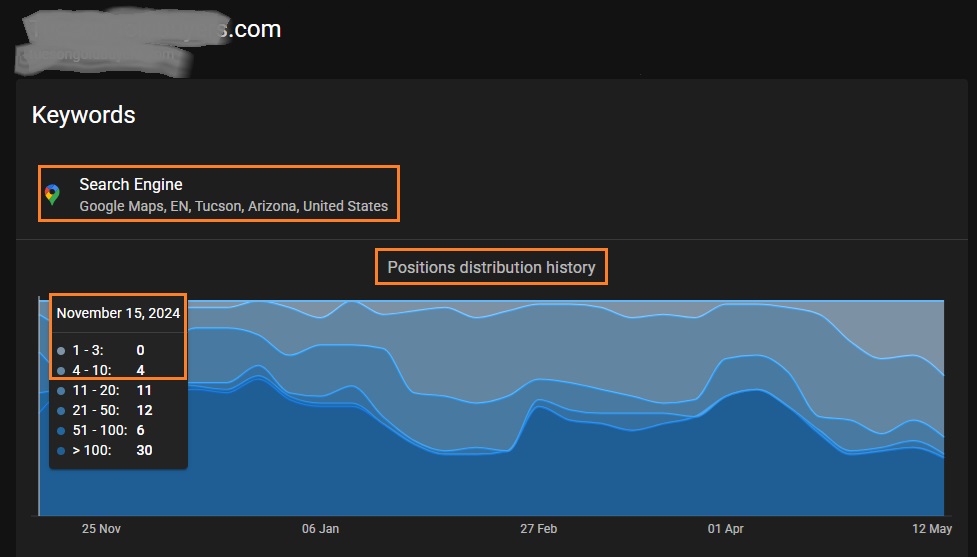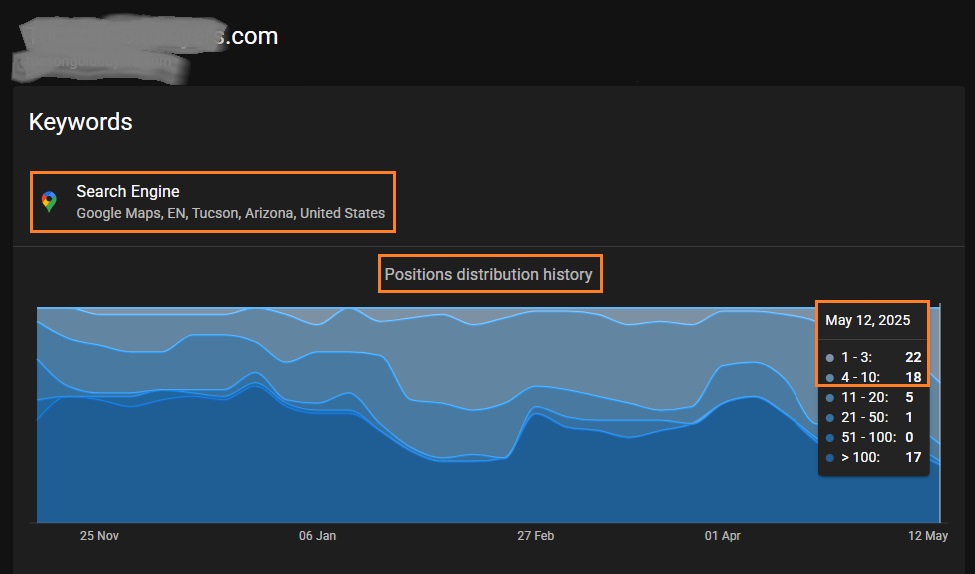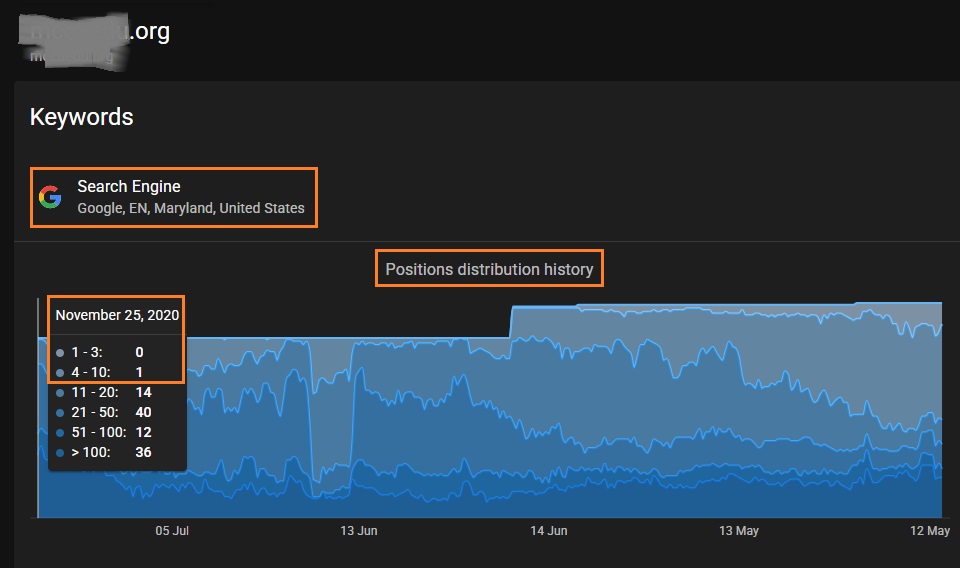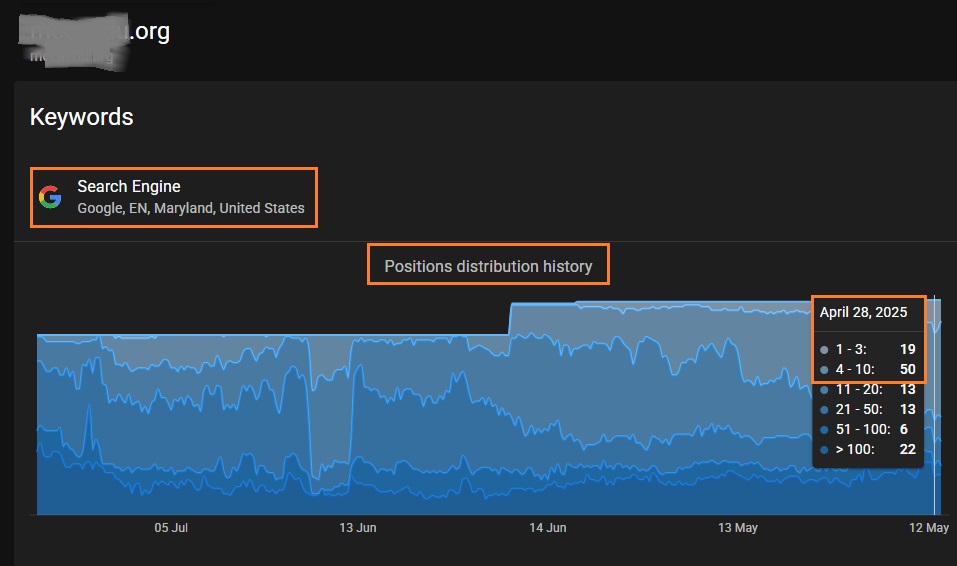Get Found First on Google Maps — Dominate Local Search Results
We help you rank higher in the Google Map Pack, attract more foot traffic, and convert local searches into real-world results. Whether you’re a single-location business or managing multiple branches — our Local Maps SEO strategy gets you seen.
📍 What Is Local Maps SEO?
Local Maps SEO focuses specifically on improving your visibility in the Google Map Pack — the block of map-based listings that appears above regular organic search results when users look for local services (e.g., “pest control near me” or “best dentist in Silver Spring”).
It’s not just about your website — it’s about your Google Business Profile (GBP), local citations, reviews, and real-world proximity signals that Google uses to decide which businesses to highlight on the map.
Local SEO Impact — Why It Matters
Even if your website is great, ranking in the Map Pack is what drives local clicks, calls, and foot traffic. That top-3 visibility is where your next customer is searching — and where your business must be found. Local Maps SEO ensures that you show up when it matters most: when people are ready to act.
46%
of all Google searches have local intent
(Source: Google)
78%
of local mobile searches result in an offline purchase
(Source: Think with Google)
44%
Google Map Pack receives 44% of local search clicks
(Source: Backlinko / Moz CTR studies)
88%
of consumers who search for a local business on mobile call or visit within 24 hours
(Source: Nectafy / Google)
3x
Businesses with 4+ star ratings are 3x more likely to appear in the top map results
(Source: BrightLocal)
93%
Local Pack listings appear in 93% of Google searches with local intent
(Source: Moz Local Ranking Factors)
500%
Near me searches grew by 500% in just 2 years
(Source: Google Trends)
14.6%
Local SEO leads have the highest conversion rate
(Source: Search Engine Journal)
🧩 Local SEO vs Standard SEO — What’s the Difference?
| Local SEO | Standard SEO | |
|---|---|---|
| Primary Goal | Rank in local search results & Map Pack | Rank nationally or globally for broad keywords |
| Focus Area | Google Business Profile, citations, local landing pages | Blog content, backlinks, technical SEO, sitewide relevance |
| Ranking Factors | Proximity, reviews, citations, GMB activity | Content depth, link authority, on-page structure |
| Best For | Local businesses, service areas, franchises | E-commerce, SaaS, blogs, national brands |
| Tools Used | Google Business Profile, BrightLocal, Local Falcon | Google Search Console, Ahrefs, Screaming Frog |
Understanding Local SEO Ranking Factors
Local search rankings are heavily influenced by various elements within your Google Business Profile (GBP). Three crucial GBP elements that significantly affect rankings include:
- Business Title: The presence of search terms within your business name can affect its ranking. For example, ‘San Rafael Electric Car Mart’ is likely to rank better for “electric cars San Rafael” than a less specifically named ‘Jim’s Auto Lot.’
- Categories: Google allows businesses to select up to ten categories. Businesses that accurately categorize themselves, such as ‘electric vehicle charging station’ rather than just ‘gas station,’ can rank higher for relevant searches.
- Website URL: The authority of the webpage linked from your GBP also plays a role. A link to a well-established homepage can boost the listing’s rank compared to a link to a lesser-known page.
While other GBP elements like photos, posts, Q&A, and operational details might not directly influence rankings, they are essential for enhancing conversions and sales. Ongoing studies and personal research can help identify which features are most effective in boosting your local SEO performance.
Reviews are customer feedback on their experiences with local businesses and play a critical role in local search rankings. If you’re new to managing reviews and online reputation, consider studying a comprehensive guide. Google notably considers three main sources of reviews:
- Google-based Reviews: Feedback and star ratings left directly on your Google Business Profile.
- Third-Party Review Sites: Reviews on platforms like Yelp or professional assessments from sites like Zagat.
- First-Party Reviews on Your Website: Testimonials published directly on a business’s own website.
Several aspects of reviews can influence search rankings:
- Recency: Are the reviews recent, or are they outdated?
- Velocity: How often does the business receive new reviews?
- Diversity: Are there reviews across various platforms?
- Authority: Might reviews from recognized reviewers or Google Local Guides be more influential?
- Format: Is there a difference in impact between text reviews and ratings-only feedback?
On-page elements are crucial for supporting a business’s visibility in Google’s local and organic search rankings. Key website elements believed to influence local search rankings include:
- Domain Authority (DA): Developed by Moz, DA predicts a site’s likelihood to rank in search engine result pages (SERPs). Higher DA correlates with better rankings locally and organically.
- Page Authority (PA): Similar to DA but for individual pages. Pages with high PA linked from your Google Business Profile tend to rank better.
- NAP Consistency: Your business’s Name, Address, and Phone Number should be prominently displayed on your website and match your Google Business Profile to improve local search accuracy.
- Optimized Content: Ensure your site’s text, tags, and internal links utilize keywords relevant to your offerings. For instance, a local EV dealer should optimize pages for “electric vehicle prices” to outrank competitors.
- Content Quality: High-quality, error-free content tends to rank higher than content with poor quality.
- Technical and Security Considerations: Ensure your website is mobile-friendly, secure, and properly rendered across devices. Correct handling of technical elements like robots.txt and redirects is essential for search engines to crawl and index your site effectively.
Citations, which are online mentions of your business’s Name, Address, and Phone Number (NAP), are categorized into two types: structured and unstructured. Structured citations appear on formal directories like Yelp, Nextdoor, or TripAdvisor, while unstructured citations are found on blogs, news sites, and other non-directory platforms. Both types are crucial, with structured citations particularly influential in local search rankings. Key aspects influencing the impact of citations include:
- Accuracy: Ensure your business’s contact information is consistent across all citations and matches your website’s details.
- Distribution: The breadth of platforms that list or mention your business affects visibility.
- Quality: The authority of the platforms citing your business contributes to the credibility of the citations.
- Relevance: Citations from platforms relevant to your industry or locale are more beneficial, enhancing the relevance of your business in local searches.
Links are essential for SEO and come in two forms: internal and inbound. Internal links connect pages within your website, creating a navigable structure. For instance, a page about electric vehicle charging rates might link to another page detailing your station locations. Inbound links originate from external sites, such as an article mentioning your EV charging station with a link back to your site. Both link types are crucial for enhancing local and organic search rankings. Key factors influencing link effectiveness include:
- Domain Authority: Links from websites with high domain authority are more beneficial for your rankings than those from lower authority sites.
- Page Authority: The strength of the specific page linking to you also impacts the value of each inbound link.
- Quantity: The total number of inbound links to your site and internal links within your site plays a role in SEO success.
- Relevance: Links should come from related sources; for example, a green energy magazine linking to an EV charging station is more pertinent than a cosmetics site.
- Diversity: A broad array of relevant sources contributing links can enhance your site’s credibility and SEO strength.
- Link Anchor Text: The actual text used in a link affects its SEO value. Descriptive, relevant anchor text can improve the link’s impact compared to generic phrases like “click here.”
Behavioral factors play a significant role in SEO by reflecting how users interact with your online listings and website. These interactions are indicators of relevance and engagement, which are believed to influence both local and organic rankings positively. Key behaviors include:
- Click-Through Rate (CTR): Measures how often people click on your listings or website pages when they appear in search results.
- Dwell Time: Tracks the duration visitors spend on your page after clicking the listing.
- Clicks-to-Call: Counts how many visitors use the “call” button on your listing to contact your business directly.
- Clicks-for-Directions: Notes how many users click to get driving directions to your business.
- Clicks-to-Site: Records the number of times users click through from your listing to your website.
Beyond these metrics, Google may also monitor interactions with your content such as photos, reviews, and posts, as well as website-specific behaviors like page visits and bounce rates. While not all may directly impact rankings, they are crucial for understanding user engagement and optimizing your SEO strategy accordingly.
Proximity is one of the strongest ranking signals for Google Maps results. When a user performs a local search (like “plumber near me”), Google prioritizes businesses that are physically closest to the user’s location — even if those businesses have weaker SEO in other areas. That’s why businesses often see different Map Pack results depending on where the search is made from.
In addition to distance, Google looks at service area settings, listed addresses, and consistency across directories to assess local relevance. If your business isn’t near the searcher or doesn’t clearly define its service area, your visibility may suffer — no matter how optimized your profile is. That’s why we align your targeting with the most strategic geo-signals available.
👥 Who Benefits Most from Local Maps SEO?
Restaurants & Cafés
Plumbers and Electricians
Pest Control Services
Spas & Wellness Centers
Veterinarians & Pet Groomers
Moving & Delivery Companies
Cleaning Services
Hair & Beauty Salons
Private Tutors & Education Centers
Property Managers
Local SEO Pricing Plans
Choose from our Local SEO packages designed for various business needs and budgets. Unsure which to select? Contact us for guidance
Local - Silver
$280 / mo- Local Citations (NAP) Building - 50+ Citations
- Targeted Guest Posting Outreach - 1 Publication
- Content Distribution - 140 Backlinks
- Google Business Profile Optimization
- On-Page SEO Optimization
- Local Keywords Research
- Site Audit & Competitors Research
- Monthly Reports
Local - Gold
$480 / mo- Local Citations (NAP) Building - 100+ Citations
- Targeted Guest Posting Outreach - 2 Publications
- Content Distribution - 280 Backlinks
- Google Business Profile Optimization
- On-Page SEO Optimization
- Local Keywords Research
- Site Audit & Competitors Research
- Monthly Reports
Local - Platinum
$680 / mo- Local Citations (NAP) Building - up to 300 Citations
- Targeted Guest Posting Outreach - 5 Publications
- Content Distribution - 280 Backlinks
- Google Business Profile Optimization
- On-Page SEO Optimization
- Local Keywords Research
- Site Audit & Competitors Research
- Monthly Reports
Struggling to Rank Locally? We’ll Show You Why
Our free SEO report reveals how your business performs in Google Maps, highlights missed opportunities, and gives you a clear path to outrank local competitors. Submit the form to get your custom evaluation — no strings attached.
💬 What Our Clients Say
⏪ Before

🚀 After

⏪ Before

🚀 After

Get More Local Leads with Our Google Maps SEO Service
🔄 Our Local Maps SEO Process
We use a clear, proven methodology to help your business gain visibility in Google Maps — from audit to real-world results. Here’s how we work:
Local Presence Audit
We evaluate your current Google Business Profile, citations, reviews, and rankings — identifying technical gaps and missed opportunities.
Competitive Benchmarking
We analyze your top local competitors to reverse-engineer their strengths and find visibility gaps we can exploit.
Optimization & Fixes
We optimize your GBP profile, fix citation inconsistencies, improve NAP data, and align your on-page content for geo-relevance.
Content & Engagement
We keep your profile fresh with monthly posts, new images, and a review acquisition strategy that keeps engagement signals flowing.
Tracking & Growth Reporting
We monitor rankings, GMB insights, and map engagement metrics — delivering transparent reports to show what’s working and what’s next.
❓Frequently Asked Questions
Maps SEO focuses on optimizing your Google Business Profile and local signals to appear in the Map Pack. Regular SEO mainly targets your website’s organic search visibility.
Yes — technically, your Google Business Profile can rank on its own. But having a well-optimized local website greatly improves your chances of showing up consistently.
Most businesses start to see noticeable improvements in 30 to 90 days, depending on your starting point, location competitiveness, and how well-optimized your profile already is.
Perfect! We’ll audit it, fix missed opportunities, enhance its content, and make sure it’s fully aligned with local ranking signals.
Google uses both the quantity and quality of reviews as a ranking signal. Positive reviews also improve conversion once people find you.
We work with businesses across the U.S., Canada, U.K., EU and other English-speaking markets — including multi-location setups.
For non-English projects please get in touch with our team for more details.
No problem. We can optimize for service areas, manage multiple locations, and build location-specific landing pages if needed.
All the improvements we’ve made — from your optimized Google Business Profile to citations and reviews — remain yours. Nothing gets “turned off.” Over time, if competitors continue to stay active and invest in local SEO while your profile activity slows down, your rankings may gradually decline. However, based on our experience, this doesn’t happen in every niche — some clients maintain strong visibility for years after pausing services.
Yes. We provide transparent reports including map rankings, impressions, actions, and engagement — so you can measure real progress.
Absolutely. That’s one of the main goals of Local Maps SEO — optimizing your business to appear for “near me” and location-based keywords when users search on mobile or in your area.
Yes. We audit, clean up, and build local and niche citations across trusted directories to improve your business’s consistency and trust with Google.
Yes, especially if your business serves a wide area. We use service area targeting, localized page content, and map optimization to help you appear in multiple geo-targets.
It’s both. We start with a full setup and optimization phase, but ongoing activity (like posting, review growth, and monitoring) is essential to maintain and improve your map rankings over time.

